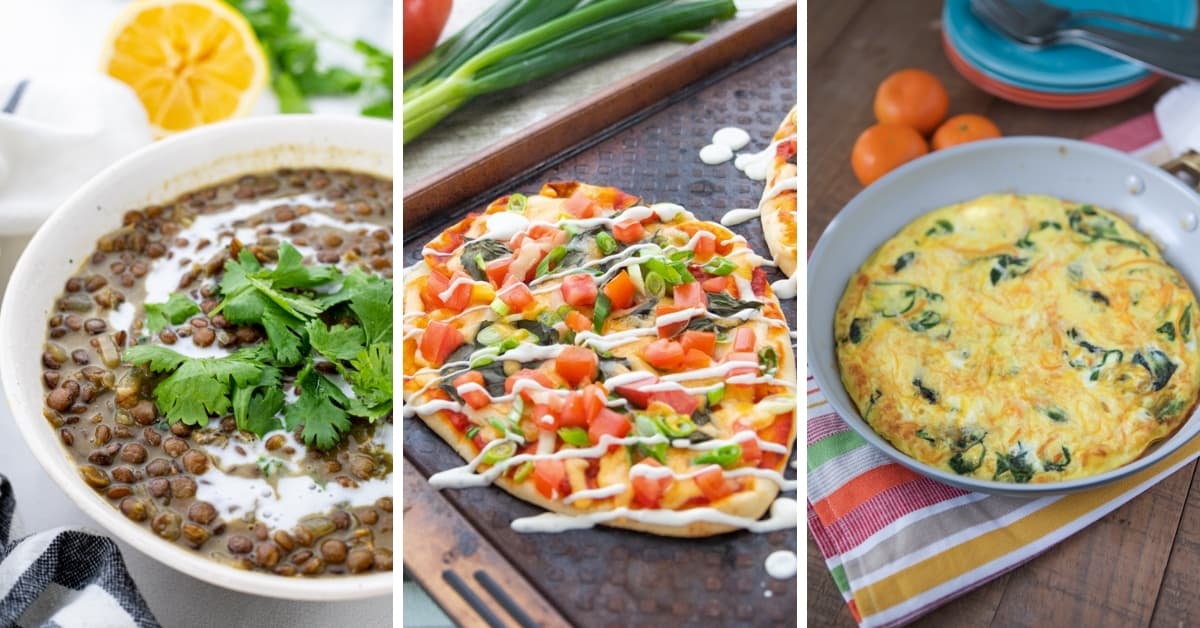Embark on a culinary adventure with “The Ultimate Guide to Soy-Free Cooking for Beginners”! Discover a world of flavor and possibility beyond the familiar soy-laden dishes. This guide unveils the secrets to crafting delicious, soy-free meals, from understanding the nuances of soy-free diets and stocking your pantry with essential ingredients to mastering fundamental cooking techniques and creating stunning, flavorful recipes. Prepare to expand your culinary horizons and confidently navigate the exciting world of soy-free cuisine.
Whether you’re avoiding soy due to allergies, intolerances, or personal preference, this guide provides the knowledge and practical tools you need to succeed. We’ll demystify soy-free cooking, offering clear explanations, step-by-step recipes, and helpful troubleshooting tips. Imagine vibrant, flavorful meals bursting with texture and aroma – all without a trace of soy. Get ready to transform your kitchen into a haven of delicious, soy-free creations.
Essential Soy-Free Pantry Staples
Building a well-stocked, soy-free pantry is the cornerstone of confident and delicious soy-free cooking. Having these essential ingredients on hand will empower you to whip up nutritious and flavorful meals with ease, avoiding hidden soy in processed foods and ensuring dietary control. This section details the key ingredients, their uses, and storage tips to maximize freshness and minimize waste.
Soy-Free Pantry Staples Organized by Category
A well-organized pantry simplifies meal preparation. Categorizing your staples allows for efficient shopping and quick recipe ideation. The following table Artikels essential soy-free pantry items, categorized for easy navigation.
| Name | Category | Uses | Storage Tips |
|---|---|---|---|
| Olive Oil | Oils & Fats | Sautéing, roasting, dressings, baking | Store in a cool, dark place; avoid direct sunlight. |
| Coconut Oil | Oils & Fats | Baking, sautéing, high-heat cooking, adding richness to dishes | Store in a cool, dark place; can solidify at room temperature. |
| Avocado Oil | Oils & Fats | High-heat cooking, salad dressings, dips | Store in a cool, dark place; refrigerate after opening for extended freshness. |
| Brown Rice | Grains | Side dish, rice bowls, pilafs, desserts | Store in an airtight container in a cool, dry place. |
| Quinoa | Grains | Side dish, salads, bowls, stuffing | Store in an airtight container in a cool, dry place. |
| Oats (rolled or steel-cut) | Grains | Breakfast porridge, baking, adding to smoothies | Store in an airtight container in a cool, dry place. |
| Chickpeas (dried or canned) | Legumes | Hummus, salads, soups, stews, falafel | Dried: store in an airtight container in a cool, dry place. Canned: store in a cool, dark place after opening. |
| Lentils (red, green, brown) | Legumes | Soups, stews, salads, lentil loaf | Dried: store in an airtight container in a cool, dry place. |
| Canned Tomatoes (diced, crushed, whole) | Vegetables | Soups, sauces, stews, pasta dishes | Store in a cool, dark place after opening. |
| Onion Powder | Spices & Seasonings | Adds savory flavor to many dishes | Store in an airtight container in a cool, dark place. |
| Garlic Powder | Spices & Seasonings | Adds savory flavor to many dishes | Store in an airtight container in a cool, dark place. |
| Dried Herbs (oregano, basil, thyme, rosemary) | Spices & Seasonings | Adds flavor and aroma to dishes | Store in an airtight container in a cool, dark place. |
A Sample Soy-Free Weekly Meal Plan
This sample meal plan utilizes the pantry staples listed above, demonstrating their versatility in creating a variety of flavorful and nutritious meals.
Monday: Quinoa salad with chickpeas, cucumber, and a lemon-herb vinaigrette.
Tuesday: Lentil soup with diced tomatoes and carrots.
Wednesday: Oatmeal with berries and nuts.
Thursday: Brown rice bowl with roasted vegetables (e.g., broccoli, peppers) and a tahini dressing.
Friday: Chickpea curry with coconut milk and rice.
Saturday: Vegetable stir-fry with brown rice.
Sunday: Leftovers or a simple frittata with vegetables.
Nutritional Benefits and Versatility of Pantry Staples
Each staple ingredient offers unique nutritional benefits and culinary applications. For example, chickpeas are an excellent source of plant-based protein and fiber, contributing to satiety and digestive health. They can be incorporated into countless dishes, from salads and dips to curries and stews. Similarly, quinoa provides complete protein and is rich in iron and magnesium, crucial for energy production and overall well-being. Its neutral flavor makes it a highly versatile grain, suitable for both sweet and savory preparations. Oats are a fantastic source of soluble fiber, promoting heart health and regulating blood sugar levels. Their creamy texture makes them ideal for breakfast porridges or as a binding agent in baking. The various oils offer different smoke points and flavor profiles, making them suitable for a range of cooking methods. The spices and seasonings add depth of flavor and can enhance the overall nutritional value of dishes through the addition of antioxidants and other beneficial compounds.
Mastering Basic Soy-Free Cooking Techniques

Embarking on a soy-free culinary journey doesn’t mean sacrificing flavor or variety. With a few fundamental techniques and a well-stocked pantry, you can create delicious and satisfying meals without relying on soy-based ingredients. This section will equip you with the essential skills to confidently navigate the world of soy-free cooking. We’ll explore core techniques, demonstrate flavorful alternatives to soy sauces, and offer tips for achieving perfect textures and tastes.
Sautéing, Roasting, and Steaming: Core Techniques
These three techniques form the bedrock of many delicious soy-free dishes. Sautéing, a quick and versatile method, involves cooking ingredients in a small amount of hot oil over medium-high heat. Imagine vibrant bell peppers and onions, glistening with olive oil, releasing their sweet aromas as they soften. Roasting, on the other hand, utilizes dry heat in an oven to create tender, caramelized vegetables and proteins. Picture succulent roasted root vegetables, their edges crisped to perfection, their interiors meltingly soft. Finally, steaming offers a healthy way to cook vegetables and fish, preserving their nutrients and vibrant colors. Envision delicate asparagus spears, gently steamed until bright green and perfectly tender-crisp. Each method brings unique textural and flavor profiles to your dishes.
Creating Flavorful Soy-Free Sauces and Marinades
The absence of soy sauce doesn’t mean a lack of flavor. A world of possibilities awaits with herbs, spices, and alternative ingredients. A simple yet powerful marinade might consist of a vibrant blend of freshly squeezed lime juice, minced garlic, a generous pinch of smoked paprika, and a touch of olive oil. Imagine the rich, smoky flavors infusing succulent chicken or fish, resulting in a tender and intensely flavorful dish. For sauces, consider a reduction of balsamic vinegar, simmered until syrupy and intensely sweet and tangy, offering a sophisticated counterpoint to roasted vegetables. Experiment with combinations of tamari (if gluten-free is not a concern), coconut aminos, fish sauce (for non-vegetarian dishes), or even a simple reduction of red wine vinegar for a unique depth of flavor.
Achieving Desired Textures and Flavors in Soy-Free Dishes
Mastering soy-free cooking often involves understanding how different ingredients interact with heat and each other. For instance, to achieve a perfectly tender chicken breast, ensure the internal temperature reaches 165°F (74°C) and avoid overcooking. Overcooked chicken can become dry and tough, while undercooked chicken poses a food safety risk. For vegetables, understanding their cooking times is crucial. Delicate vegetables like spinach wilt quickly, while heartier vegetables like carrots require longer cooking times to soften. Experiment with different cooking methods and times to find what works best for your preferred textures. To enhance flavors, consider adding a touch of acidity (lemon juice, vinegar) to brighten dishes, or a touch of sweetness (maple syrup, honey) to balance savory notes. Don’t be afraid to experiment and find your own unique flavor combinations.
Mastering soy-free cooking is an enriching journey that unlocks a world of culinary creativity. From understanding the importance of reading labels to confidently creating flavorful sauces and mastering diverse cooking techniques, this guide has equipped you with the essential knowledge and skills to thrive in the soy-free kitchen. Remember, each delicious dish you create is a testament to your newfound culinary expertise and a celebration of vibrant, healthy eating. Embrace the challenge, experiment with flavors, and enjoy the satisfying results of your soy-free culinary adventures. Bon appétit!
Popular Questions
What are some common soy substitutes for soy sauce?
Coconut aminos, tamari (if gluten-free is not a concern), and Worcestershire sauce (check for soy) are excellent soy sauce substitutes. Experiment with different options to find your favorite.
How can I ensure my soy-free dishes are still flavorful?
Don’t be afraid to experiment with herbs, spices, citrus juices, and flavorful vinegars. These ingredients add depth and complexity to your dishes without relying on soy.
Are all types of tofu soy-free?
No, tofu is made from soybeans. There are no soy-free versions of tofu.
Where can I find soy-free products?
Many health food stores and supermarkets carry a wide range of soy-free products. You can also find many soy-free options online.


